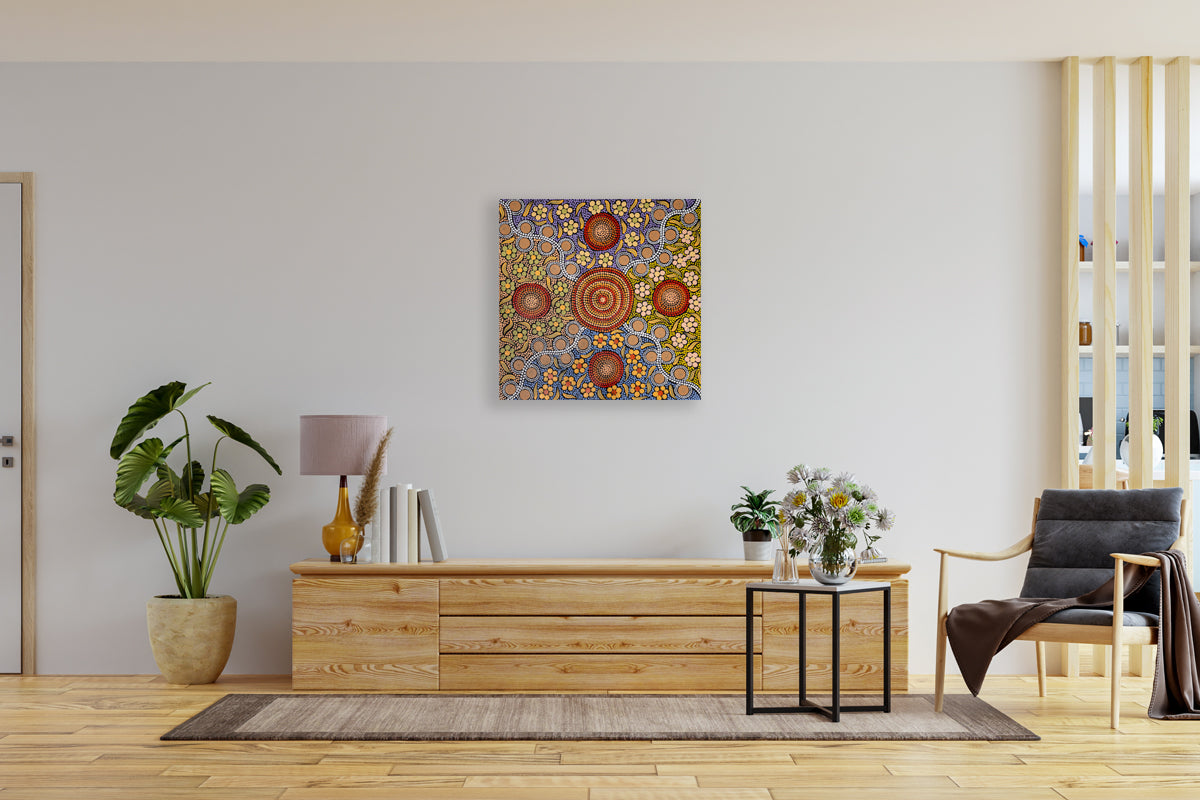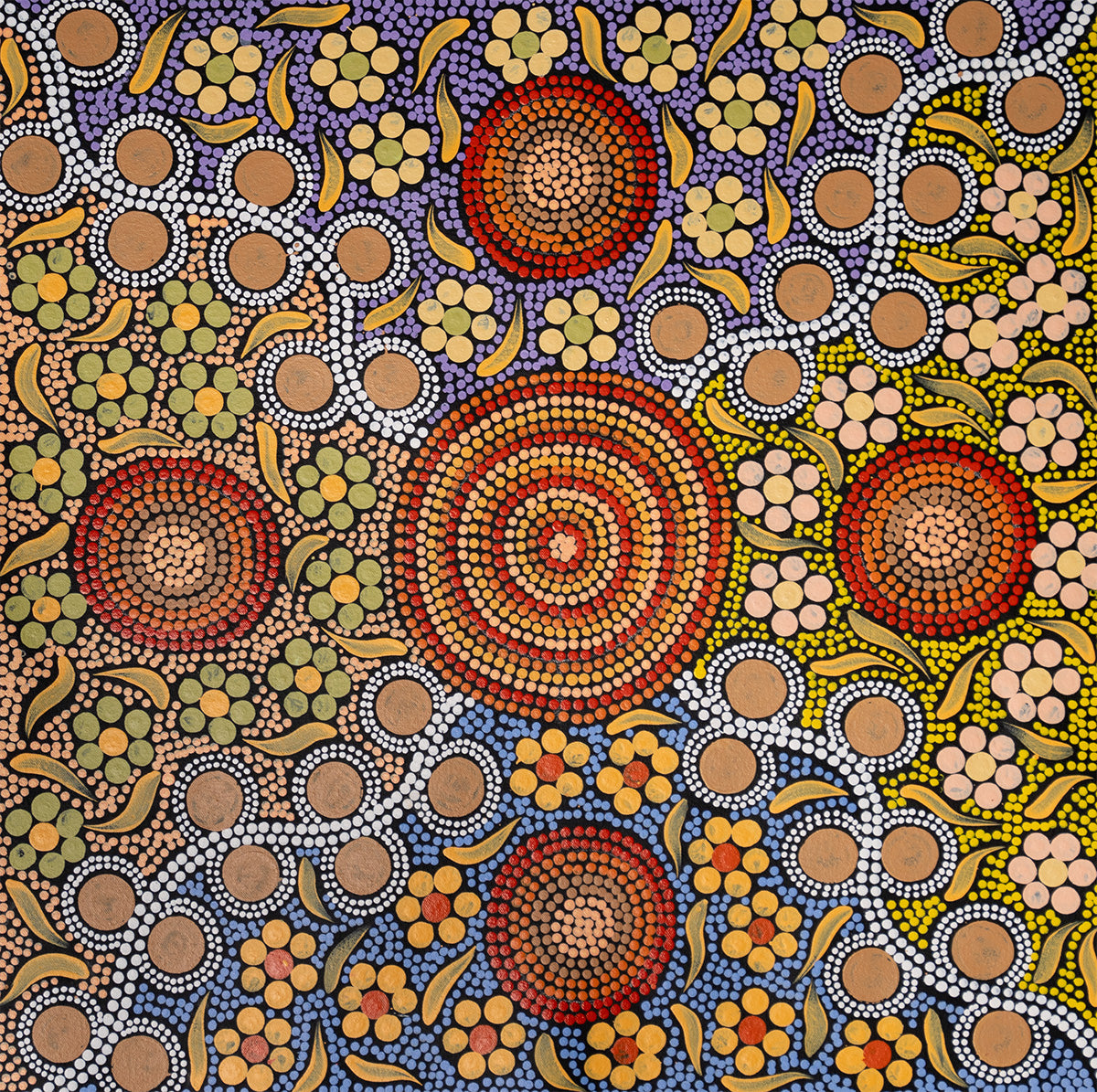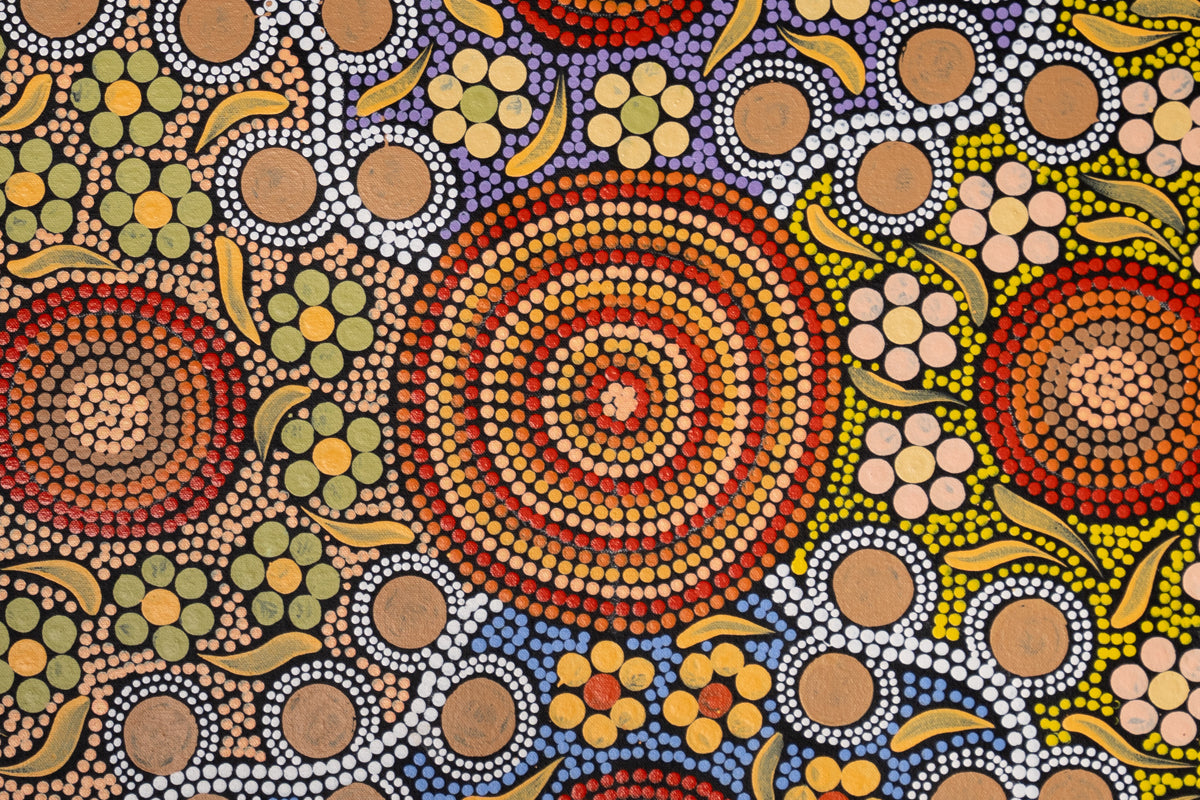Aboriginal Painting - Bush Tucker
Aboriginal Painting - Bush Tucker
Julieanne Turner Nungurrayi
SKU:JTN07928
Couldn't load pickup availability
Aboriginal Painting Title: Bush Tucker
Aboriginal Artist: Julieanne Turner Nungurrayi
Size: 60 x 60 cm
Medium: Acrylic on canvas
Authenticity:
COA and pictures of the artist holding and signing her work will be provided.
Story:
Bush tucker, also known as bushfood, refers to native Australian foods traditionally used as sustenance by Indigenous Australians, including Aboriginal and Torres Strait Islander peoples. Beyond its Australian origins, bush tucker can describe any native fauna or flora used for culinary or medicinal purposes globally.
Traditional Animal and Plant Foods
Native animal foods include kangaroo, emu, witchetty grubs, and crocodile. Plant foods feature a variety of fruits such as quandong and kutjera, spices like lemon myrtle, and vegetables including warrigal greens and various native yams.
Impact of Colonization on Bush Tucker
The colonization of Australia in 1788 and subsequent settlement by non-Indigenous peoples severely impacted the traditional use of bushfoods. The introduction of non-native foods, loss of traditional lands, and destruction of native habitats for agriculture reduced access to native foods for Aboriginal people.
Revival and Commercialization
Since the 1970s, there has been a growing recognition of the nutritional and gourmet value of native foods among non-Indigenous Australians. This has led to the expansion of the bushfood industry, with kangaroo meat and other native foods becoming available in supermarkets and restaurants. The commercial cultivation of native food crops has also increased significantly.
Bush Tucker in Aboriginal Culture and Art
Bush Tucker Dreamings—such as Bush Berry Dreaming, Bush Tomato Dreaming, and Bush Orange Dreaming—reference the search for bush tucker across the Central Desert landscape. Women, the principal gatherers, rely on their knowledge to locate edible roots, plants, and seeds. The availability of bush tucker is influenced by seasonal changes and natural elements like sun and rain.
Collecting bush tucker remains a common practice among Aboriginal people in Central Australia, though some traditional methods, such as seed collecting, are less frequent now.
Depiction in Aboriginal Art
Bush tucker is a prominent theme in Aboriginal paintings, often depicted in abstract forms or illustrated in their natural state. These artworks can symbolize Dreamtime stories, influenced by song, dance, and interconnected narratives, or depict daily rituals and teaching moments.
Women Collecting Bush Tucker is a common subject in Utopian and Central Australian Aboriginal art. Traditional symbols, such as U-shaped motifs, represent women and their tools, reflecting centuries-old practices seen in cave and sand drawings. Artists like Marie Ryder use footprints in the sand to show the tracks left by women, adding a unique perspective to this cultural practice.
Share






